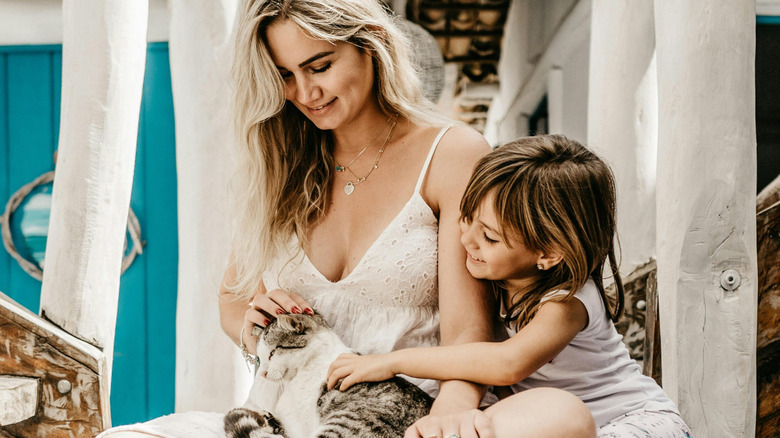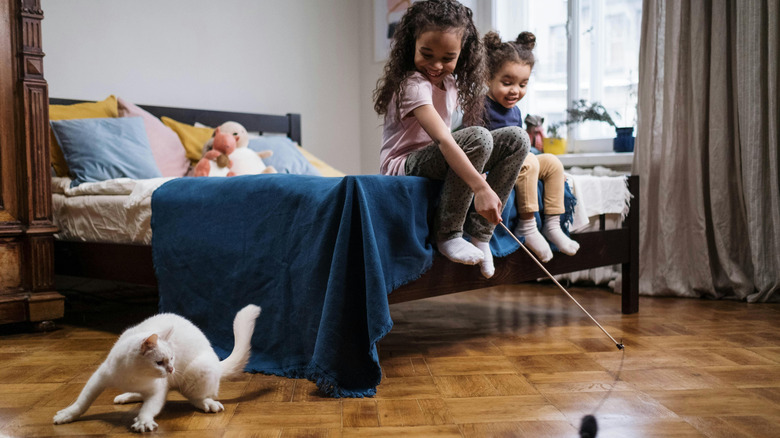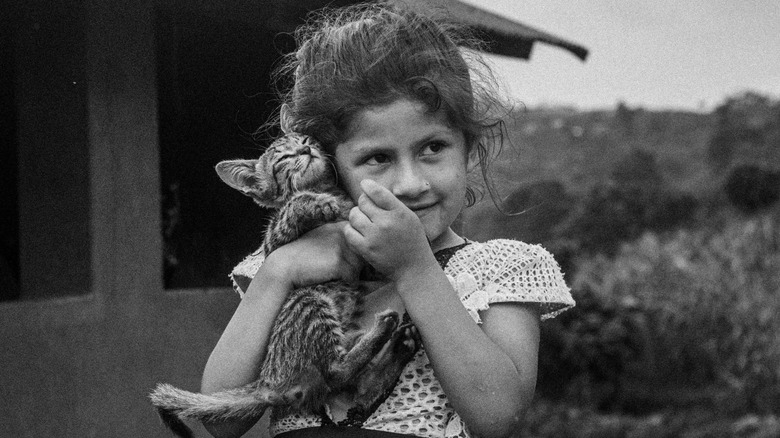The Best & Worst Ages Of Cat To Adopt If You Have A Child Under 5 Years Old
Adopting a cat when you have a young child can feel like the start of a heartwarming story. It's easy to imagine a toddler and a kitten growing up side by side, full of playful moments and affection. While that idea is appealing, reality is often more complicated, and the wrong match can bring challenges for your family and cat.
Young children are naturally curious and full of energy, and their interactions with pets can sometimes be overwhelming. Even with the best intentions, a child's unpredictable movements and enthusiasm may not align with what a cat finds comfortable. These early experiences can shape the way a cat responds to people as it grows, just as they can influence how a child feels about pets.
For families, an adoption that doesn't fit well can take away from the joy a new cat should bring, but when the age is a good match, it sets the stage for a bond that grows in safety, warmth, and love. That's why you should aim for cats that are least 2 to 3 years old, with anything under that being the worst match for young children.
Why adult cats are the right fit for young kids
Cats over 2 or 3 years old tend to be the best fit for households with children under 5. At this age, they've left behind some of the unpredictable energy of kittenhood and developed more steady personalities. This makes it easier for families to anticipate how the cat will respond in a busy home. Many adult cats also have a calmer nature that helps them comfortably adjust to the noise and activity that come with toddlers.
Their energy levels are balanced in ways that suit a household with young kids. Adult cats are still playful, but they're less likely to scratch or nip during play and understand when to step away if they need rest. This balance allows them to enjoy interaction while keeping playtime safe and positive for the child. Senior cats can also do well in some households, provided their need for calm and gentle handling is respected.
Adopting an older cat brings another benefit: Many in shelters are overlooked in favor of kittens. Families who adopt one not only bring home a companion better suited to children but also give a deserving animal a second chance. With patience, supervision, and gentle handling, adult cats can thrive in family settings and help children grow into empathetic adults.
Why tiny kittens aren't right for young kids
Young kittens may be appealing, but they're generally a bad choice for families with children under 5 years old. Their small bodies make them vulnerable when play gets too rough, a child stumbles, or excitement turns into squeezing. These incidents can have a lasting impact on a kitten's comfort and trust, sometimes making them nervous around people as they grow.
Age isn't the only thing that shapes how a cat fits into family life, though. Thinking about the type of cat that's a good match for kids can be just as important since a calm, steady personality often helps nurture a safe and loving bond. Young kittens are still learning how to interact with the world, and play-biting or scratching comes naturally at this stage. While harmless among littermates, these behaviors can cause real pain or fear for a toddler. Because kittens use sharp teeth and claws to explore, playtime with little ones can quickly shift from fun to overwhelming.
The idea of raising a kitten and child together often overlooks the challenges that come with it. Within months, that small bundle of energy will become an adult, yet the early struggles can shape how both the child and cat relate in the future. Ultimately, waiting until children are older before adopting a kitten usually creates a safer start.


